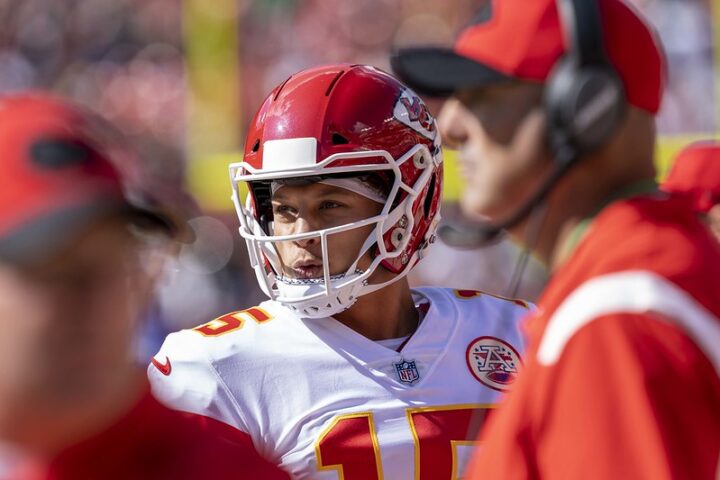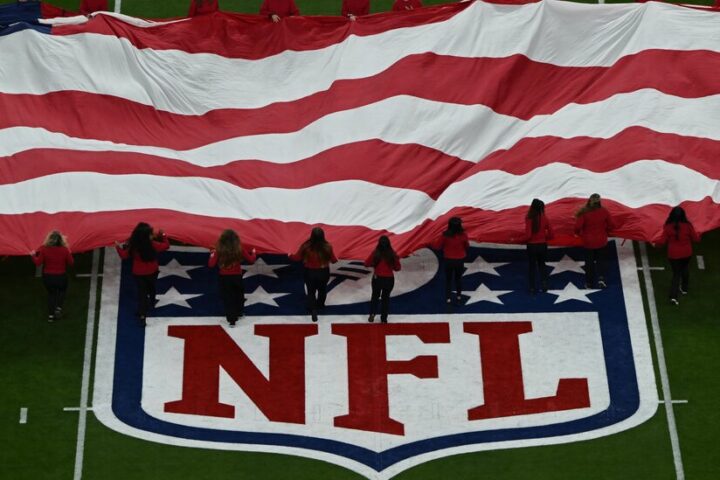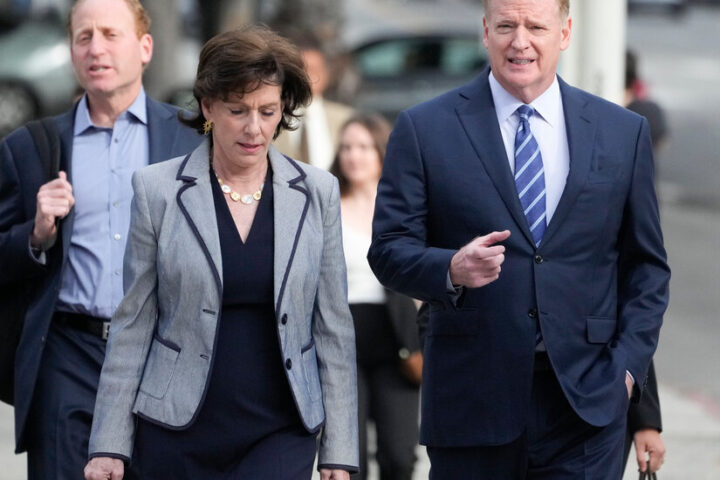CINCINNATI — I put out the call for questions for a stats mailbag earlier in the week, and below are some of the more interesting ones I received.
We’ll start with a couple of Super Bowl-related ones, then smoothly transition into more Cincinnati Bengals-specific queries with a submission that encompasses both.
Cincinnati Bengals, Super Bowl Mailbag
In all actual Super Bowl rematches (not reg season “rematches”), how many times has the losing team from the last matchup gone on to win the next matchup? – AnnalEner
Not all Super Bowl rematches are created equal. Some have occurred in rapid fashion, while others have been decades apart.
I’ll focus on the ones that have happened within five years. And with this one qualifying, it’s a great example of how quickly rosters turn over. There are only eight players for the 49ers who were on the team when it lost to the Chiefs in Super Bowl 54.
In 2007, the New York Giants beat the New England Patriots 17-14 in Super Bowl 42, then four seasons later, the Giants won the rematch 21-17 in Super Bowl 46.
In 1992, the Dallas Cowboys beat the Buffalo Bills 52-17 in Super Bowl 27, and they handled them easily against the following season in Super Bowl 28, winning 30-13.
And in 1975, the Pittsburgh Steelers beat the Cowboys in Super Bowl 21-17 in Super Bowl 10. Three seasons later, the Steelers beat the Cowboys 35-31 in Super Bowl 13.
So the original winner is 3-0 in rematches within four seasons.
The Cowboys also beat the Steelers 27-17 in Super Bowl 30, 17 years after their previous meeting.
The San Francisco 49ers beat the Bengals 26-21 in Super Bowl 16 and 20-16 in Super Bowl 23.
And the New England Patriots beat the Los Angeles Rams 13-3 in Super Bowl 53 and 20-17 in Super Bowl 36.
MORE: Back in the Big Game? Cincinnati Bengals an Early Betting Favorite for Super Bowl 59
There were two times when a rematch flipped, but all were at least a decade apart.
The Philadelphia Eagles beat the Patriots 41-33 in Super Bowl 42. Eighteen seasons prior, the Patriots beat the Eagles 24-21 in Super Bowl 34.
The Washington Redskins beat the Miami Dolphins 27-17 in Super Bowl 17, a decade after the Dolphins won 14-7 in Super Bowl 7 to cap their undefeated season.
Which coaches have the best record after a bye over the last 10 years? – @ByJayMorrison
Thanks for the question, me.
I was wondering about it, so I looked it up and wrote about it. You can read the results by clicking the post below after you finish the mailbag.
📝 @ByJayMorrison: Whether it’s been the regular season, the first round of the playoffs, or the Super Bowl, the Chiefs’ Andy Reid is one of the best post-bye head coaches. https://t.co/ogL3l8YWO3
— Pro Football Network (@PFN365) February 8, 2024
How many teams have lost a Super Bowl and then won one in the following 4 seasons? – @BcatsCincy
I see where you’re going here — looking for the Bengals to add themselves to the list in 2024 or 2025.
It’s happened 11 times. A lot were early in the Super Bowl era, and a lot have been in the last decade.
- The Chiefs lost Super Bowl 1, then won Super Bowl 4.
- The Baltimore Colts lost Super Bowl 3, then won Super Bowl 5.
- The Cowboys lost Super Bowl 5, then won Super Bowl 6.
- The Dolphins lost Super Bowl 6, then won Super Bowls 7 and 8.
- The Cowboys lost Super Bowl 10, then won Super Bowl 12.
- The Redskins lost Super Bowl 18, then won Super Bowl 22.
- The Patriots lost Super Bowl 46, then won Super Bowl 49.
- The Broncos lost Super Bowl 48, then won Super Bowl 50.
- The Patriots lost Super Bowl 52, then won Super Bowl 53.
- The Rams lost Super Bowl 53, then won Super Bowl 56.
- The Chiefs lost Super Bowl 55, then won Super Bowl 57.
I’d like to see RAS scores for every offensive lineman drafted by the Bengals since Whitworth in 2006. The Pollack argument has gotten so bad, and I’m convinced he doesn’t have the athletic lineman needed in the NFL to be elite. – @CPfeffer7
I’m gonna second the other guy and ask for RAS scores of OL/DL we’ve taken in Tobin or just ZT era? – @sacyhac
Thanks for the similar questions, you two.
First, for those who aren’t familiar, RAS stands for Relative Athletic Score, which is the brainchild of Kent Lee Platte. It’s a metric that combines multiple measurements from the Combine — height, weight, wingspan, drills, etc. — into one aggregate number, the RAS, to compare the player to other athletes at the same position.
I went to the start of Duke Tobin’s tenure in 1999. The Bengals have drafted 34 offensive linemen during that time, although five of them did not have RAS scores, which usually is the result of the player being injured during the draft process. Those five were Cedric Ogbuehi, J.J. Dielman, Billy Price, Rod Taylor, and Jackson Carman.
Of the other 29 offensive linemen, the average RAS score was 7.1.
The top five:
- Eric Steinbach, 2003, 10.0
- Jake Fisher, 2015, 9.72
- Scott Kooistra, 2003, 9.63
- Reid Fragel, 2013, 9.6
- Stacy Andrews, 2004, 9.24
Steinbach and Fisher were second-round picks, while Fragel and Kooistra were seventh-rounders. The Bengals drafted Andrews in the fourth.
MORE: Cincinnati Bengals Center Ted Karras Shares Appreciation for Brian Callahan on NFL Red Carpet
The bottom five:
- Trey Hill, 2022, 2.02
- Reggie Stephens, 2010, 2.62
- Anthony Collins, 2008, 2.84
- Andre Smith, 2009, 4.03
- T.J. Johnson, 2013, 4.08
Four of the five were Day 3 picks (Collins, fourth; Hill, sixth; Stephens, seventh; Johnson, seventh). But Smith was the No. 9 pick in 2009.
As for defensive linemen, the Bengals have drafted 36 since 1999. Eight of them did not have RAS scores.
The average score for the other 28 is 7.04, nearly mirroring the offensive linemen.
The top five:
- Jason Shirley, 2008, 10.0
- Margus Hunt, 2013, 9.93
- Renell Wren, 2019, 9.74
- Myles Murphy, 2023, 9.71
- Michael Johnson, 2009, 9.65
Murphy, of course, was a first-rounder, while Johnson and Hunt were Day 2 picks as third-rounders. The Bengals took Wren in the fourth and Shirley in the fifth.
The bottom five:
- Tyler Shelvin, 2021, 0.86
- Frostee Rucker, 2006, 3.73
- Pat Sims, 2008, 3.85
- Ryan Glasgow, 2017, 4.18
- Kelly Gregg, 1999, 4.52
Drafting Shelvin in the fourth round is one of the worst picks in team history. Glasgow and Gregg also were fourth rounders, and Sims and Rucker went in the third.
If I expand it, the sixth and seventh worst RAS scores belong to guys who had good careers in Cincinnati. Robert Geathers was 4.69, and Domata Peko was 5.15.
What is the average length of stay of Bengals players drafted since 2011? Split into two parts. Marvin’s picks 2011-2018 vs Zac’s picks 2019-present. Is the front office getting better or worse at hitting, or is the success rate the same? – @thebookerman
Appreciate the question, but we’ll have to wait a while to truly measure this one because we have no idea how long the members of the last three or four draft classes are actually going to be Bengals.
Plus, tenure in town is not automatically indicative of success. The Bengals definitely hit on Kevin Zeitler, but they let him walk after five seasons. And he’s still in the league and just went to his first Pro Bowl.
What is the average tenure on their current roster for tight ends finishing in the positional top five in total receptions each of the last five years? Seems like the top TEs, outside LaPorta, are longer-tenured vets. – @DannyB1414
2023
- Evan Engram, Jaguars, 114 (second, seventh overall)
- T.J. Hockenson, Vikings, 95 (second, fifth overall)
- Travis Kelce, Chiefs, 93 (11th)
- Sam LaPorta, Lions, 86 (first)
- David Njoku, Browns, 81 (seventh)
- Trey McBride, Cardinals, 81 (second)
2022
- Kelce, Chiefs, 110 (10th)
- Mark Andrews, Ravens, 73 (fifth)
- Engram, Jaguars, 73 (first, sixth overall)
- Tyler Higbee, Rams, 72 (seventh)
- Pat Freiermuth, Steelers, 63 (second)
2021
- Andrews, Ravens, 107 (fourth)
- Kelce, Chiefs 92 (ninth)
- Dalton Schultz, Texans, 78 (fourth)
- Mike Gesicki, Dolphins, 73 (fourth)
- George Kittle, 49ers, 71 (fifth)
2020
- Darren Waller, Raiders, 107 (third, fifth overall)
- Kelce, Chiefs 105 (eighth)
- Logan Thomas, Commanders, 72 (first, fifth overall)
- Hockenson, Lions, 67 (second)
- Engram, Giants, 63 (fourth)
2019
- Kelce, Chiefs, 97 (seventh)
- Waller, Raiders, 90 (second)
- Zach Ertz, Eagles, 88 (seventh)
- Kittle, 49ers 85 (third)
- Austin Hooper, Falcons, 75 (fourth)
No real trend here, as they tend to be youngsters as well as veterans. Maybe the most notable part of the stat search is how many different names appear. I was expecting to see a lot more repeats in the top five each year.
If you’re wondering who the last Bengals tight end was to finish in the top five, it was Rodney Holman. He was fourth with 50 catches in 1989.
MORE: Cincinnati Bengals Announce 3 Hirings, 1 of Which Is Newly Created Position on Offense
The highest a Cincinnati tight end has finished is second. Bob Trumpy did that in 1972 with 44 catches. Trumpy tied for third in 1971 with 40 catches.
Dan Ross has the team record for most top-five finishes by a tight end with three, doing it in successive years in 1980 (56), 1981 (71), and the strike-shortened 1982 (47).
As the 2023 NFL season comes to a close, the 2024 NFL Draft is on the horizon. Pro Football Network has you covered with everything from team draft needs to the Top 100 prospects available. Plus, fire up PFN’s Mock Draft Simulator to put yourself in the general manager’s seat and make all the calls!
Listen to the PFN Bengals Podcast
Listen to the PFN Bengals Podcast! Click the embedded player below to listen, or you can find the PFN Bengals Podcast on iTunes, Spotify, and all major podcast platforms. Be sure to subscribe and leave us a five-star review! Rather watch instead? Check out the PFN Bengals Podcast on our NFL YouTube channel.




